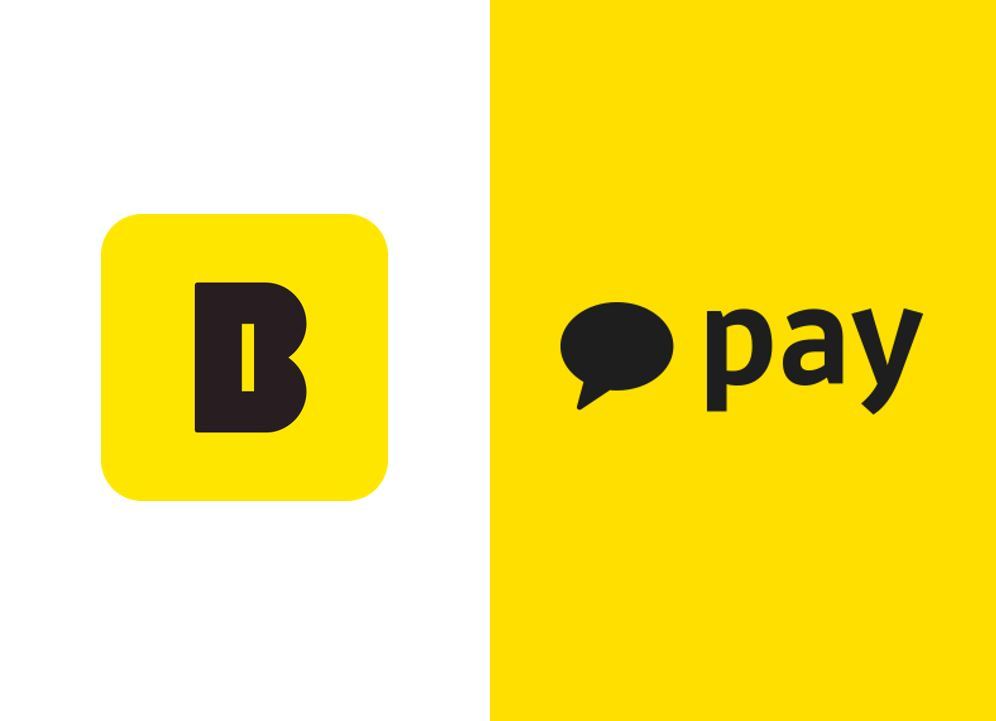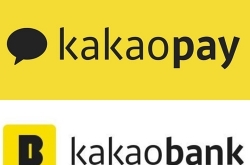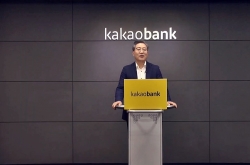 |
Logos of Kakao Bank (left) and Kakao Pay |
Less than two weeks after Kakao Bank submitted a listing application to the Korea Exchange, Kakao Pay, another finance arm of South Korean internet giant Kakao, followed suit earlier this week.
Such a back-to-back announcement of their plans for initial public offerings and listing on Korea’s stock market highlights disruptive technologies that are going mainstream in the domestic financial industry and challenges that traditional banking groups here may face.
Each company’s enterprise value is estimated to exceed the 10 trillion-won ($9 billion) mark. For example, Kyobo Securities analyst Park Ji-won estimated Kakao Bank‘s enterprise value to reach 13 trillion won, and that of Kakao Pay to extend to 10.3 trillion won. The combined valuation of the two companies exceeds those of four major banking groups in Korea: KB, Shinhan, Hana and Woori.
Market watchers say the high valuation stems from their growth potential in disruptive technologies, largely attached to Korea‘s largest standalone messenger app KakaoTalk, regardless of their total asset size and lack of profitability.
“The traditional valuation tool is not applied, as the valuation of (Kakao‘s finance arms) reflects their potential to become scalable,” said Jeong Tae-joon, an analyst at Yuanta Securities Korea.
Mobile lender Kakao Bank has 14 million monthly active users as of end-2020, nearly double that of its traditional commercial banking competitors. This stands in contrast with its total assets of 26.7 trillion won, much smaller than the fourth-largest Woori Financial Group‘s 384.5 trillion won.
Kakao Pay, operator of an instant digital payment service, saw its total volume of users’ money transactions jump nearly 18-fold in three years, to 66.9 trillion won in 2020. The fast-paced growth showed contrast with the fact that Kakao Pay was making losses for four consecutive years since its foundation in April 2017.
In 2020, Kakao Bank logged a 122.6 billion-won operating profit, while Kakao Pay recorded an operating loss of 5.5 billion won.
According to Korean analysts, Kakao Pay’s comparables to determine the enterprise value are its mobile payment rivals Naver Financial, Viva Republica and PayPal, while Kakao Bank‘s valuations are based on the estimate by investors who joined the latest pre-IPO round, including TPG Capital and Anchor Equity Partners, plus a market premium.
The question is how the companies could generate a new profit model in the future by taking advantage of their customer base.
“Kakao Bank is designed to use its disruptive technology to create a profit-making business model, and what it has shown to customers so far is a taste of convenience,” said Kim In, an analyst at BNK Securities.
“But we cannot turn a blind eye against its potential because Korea’s information technology firms have a track record of launching a profitable business model based on its platform economy.”
Also, Kakao Pay‘s enterprise value must be calculated, taking into account the lack of profitability of its flagship money transfer services in Korean market, according to Park of Kyobo Securities.
Kakao was the largest shareholder of both companies. As of April, Kakao was holding 31.6 percent stake in Kakao Bank and 55 percent in Kakao Pay, according to the KRX.
Given that it takes a few months for the KRX, Korea‘s sole stock market operator, to green light the listing of Kakao Bank and Kakao Pay on the main board Kospi, shares of both companies are expected to start trading publicly in the second half.
By Son Ji-hyoung (
consnow@heraldcorp.com)

![[Herald Interview] From fractional share trading to insurance - Kakao Pay gears up to go beyond payment services](http://res.heraldm.com/phpwas/restmb_idxmake.php?idx=605&simg=/content/image/2021/04/20/20210420000895_0.jpg)








![[Weekender] Korea's traditional sauce culture gains global recognition](http://res.heraldm.com/phpwas/restmb_idxmake.php?idx=644&simg=/content/image/2024/11/21/20241121050153_0.jpg)


